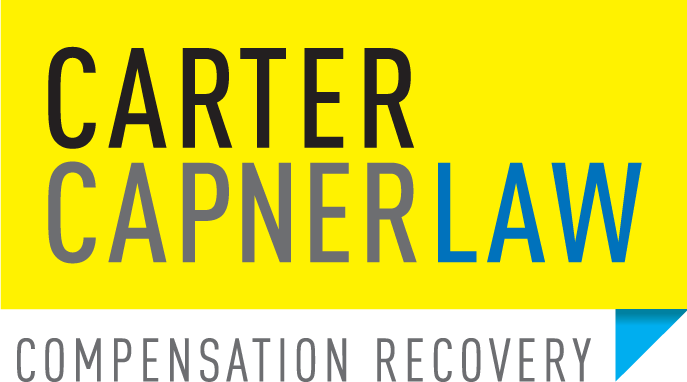Written by Peter Carter
Updated on January 30, 2025Workplace injuries remain a significant concern in Queensland, particularly in physically demanding industries such as construction, agriculture, and healthcare. Some sources indicate these sectors account for over 65% of serious claims nationwide. In 2023 alone, it’s been reported that 28,000 workers’ compensation claims were lodged in Queensland, amounting to $1.2 billion in direct costs. This article examines the high-risk industries, outlines the legal protections under Queensland law, and provides actionable guidance for both injury prevention and claiming compensation.
Introduction#
Physically intensive jobs often expose workers to demanding tasks, repetitive motions, and heightened risk factors. While tradies frequently appear in statistics, other roles—transport, healthcare, and agriculture, for instance—also report above-average workplace injury rates. Recognising the causes of these injuries and understanding the relevant Queensland legislation helps employees and employers create safer environments and navigate the claims process if an injury occurs.
High-Risk Professions: Key Statistics#
While the exact numbers vary from source to source, data suggests the following four industries consistently see the highest rate of serious workplace injury claims:
| Industry | Approx. % of Serious Claims* | Common Injuries |
|---|---|---|
| Construction | ~32% | Falls, fractures, spinal injuries |
| Agriculture | ~22% | Amputations, chemical burns |
| Healthcare | ~18% | Back injuries, psychological trauma |
| Transport | ~15% | Vehicle collisions, repetitive strain |
*Figures cited have not been formally confirmed by official statistics. Always refer to
Safe Work Australia and
WorkSafe Queensland
for the latest data.
Why These Industries Face Elevated Risks#
Industries like construction and agriculture typically involve tasks such as heavy lifting, prolonged manual handling, or working with hazardous machinery. Factors that elevate injury risks include:
- High Physical Demands: Constant lifting, twisting, or repetitive movements.
- Time Pressures: Tight deadlines may encourage workers to cut corners on safety.
- Difficult Environments: Outdoor sites with uneven terrain or changing weather conditions.
- Fatigue & Shift Work: Irregular hours reduce alertness and can heighten the likelihood of accidents.
- Insufficient Training: Lack of up-to-date safety protocols or proper oversight.
Healthcare roles, meanwhile, involve patient handling and high stress, which can lead to musculoskeletal disorders or mental health challenges if not managed properly.
Legal Protections Under Queensland Law#
Queensland offers comprehensive statutory protections for injured workers. The main legal frameworks include:
- Workers’ Compensation and Rehabilitation Act 2003 (Qld): Provides compensation for medical expenses, rehabilitation, and lost wages, generally replacing up to 85% of the worker’s income.
- Work Health and Safety Act 2011 (Qld): Mandates employers to create and maintain safe work systems, train staff on risk prevention, and supply personal protective equipment (PPE).
- Civil Liability Act 2003 (Qld): Can be relevant in negligence claims if employer misconduct or safety lapses are demonstrated.
“An employer’s failure to provide safe systems of work constitutes negligence.”
– Civil Liability Act 2003 (Qld), Section 305
If an employer’s negligence is established, workers may access additional compensation through common law claims, beyond the statutory benefits offered by WorkCover.
Additional Considerations & Time Limits#
Time limits for lodging a WorkCover claim in Queensland generally require submission within 6 months from the date of injury. However, for common law claims involving negligence, an additional limitation period (often 3 years) may apply from the date of the accident or awareness of the injury.
Failing to meet these time limits can jeopardise a worker’s right to compensation, so prompt action is critical. Employers are also advised to maintain thorough records—incident reports, safety audits, and training logs—to defend against potential claims.
Best Practices for Injury Prevention#
- Ongoing Risk Assessments: Conduct site audits regularly to identify and mitigate hazards.
- Routine Training & Refreshers: Keep employees current with new safety regulations, proper tool usage, and emergency procedures.
- Open Reporting Culture: Encourage staff to promptly report near-misses and minor injuries before they worsen.
- Ergonomic Adjustments: Provide adjustable workstations, mechanical aids, or rotation of tasks to reduce strain.
- Return-to-Work Plans: Offer modified or light duties that accommodate recovering employees, easing them back into normal operations.
These measures can significantly reduce the frequency and severity of workplace injuries, while fostering a culture of safety and continuous improvement.
What to Do If You’re Injured#
Seek Immediate Medical Attention#
Notify Your Employer#
Lodge Your WorkCover Claim#
WorkCover QLD or seek legal assistance.
Consult Legal Advice if Necessary#
common law avenues in addition to statutory claims.
From construction sites to healthcare wards, high-risk roles require a strong commitment to safety. Although unverified figures suggest up to 28,000 workers’ compensation claims in Queensland this year, the underlying message is clear—workplace injuries can impose enormous personal and financial burdens.
By fostering an ongoing culture of awareness, continuous risk assessments, and open communication, employers can mitigate hazards. In turn, workers equipped with knowledge of their rights, along with prompt reporting and claim-lodging procedures, stand better positioned to receive fair compensation. Ultimately, collaboration and timely action remain the keys to reducing workplace injuries and ensuring safer, healthier work environments for all Queenslanders.
Additional Resources#
- WorkSafe Queensland – Official guidelines, audit checklists, and statistics
- WorkCover Queensland – Claims portal, forms, and step-by-step processes
- Free Legal Consultation – Expert advice on workplace compensation and negligence claims


